PsychNewsDaily Publishers
100 Summit Drive
Burlington, MA, 01803
Telephone: (320) 349-2484
PsychNewsDaily Publishers
100 Summit Drive
Burlington, MA, 01803
Telephone: (320) 349-2484
The 1970s showcased iconic hairstyles like feathered layers, shag haircuts, and afros, influencing modern trends and reflecting the decade's vibrant culture and fashion.
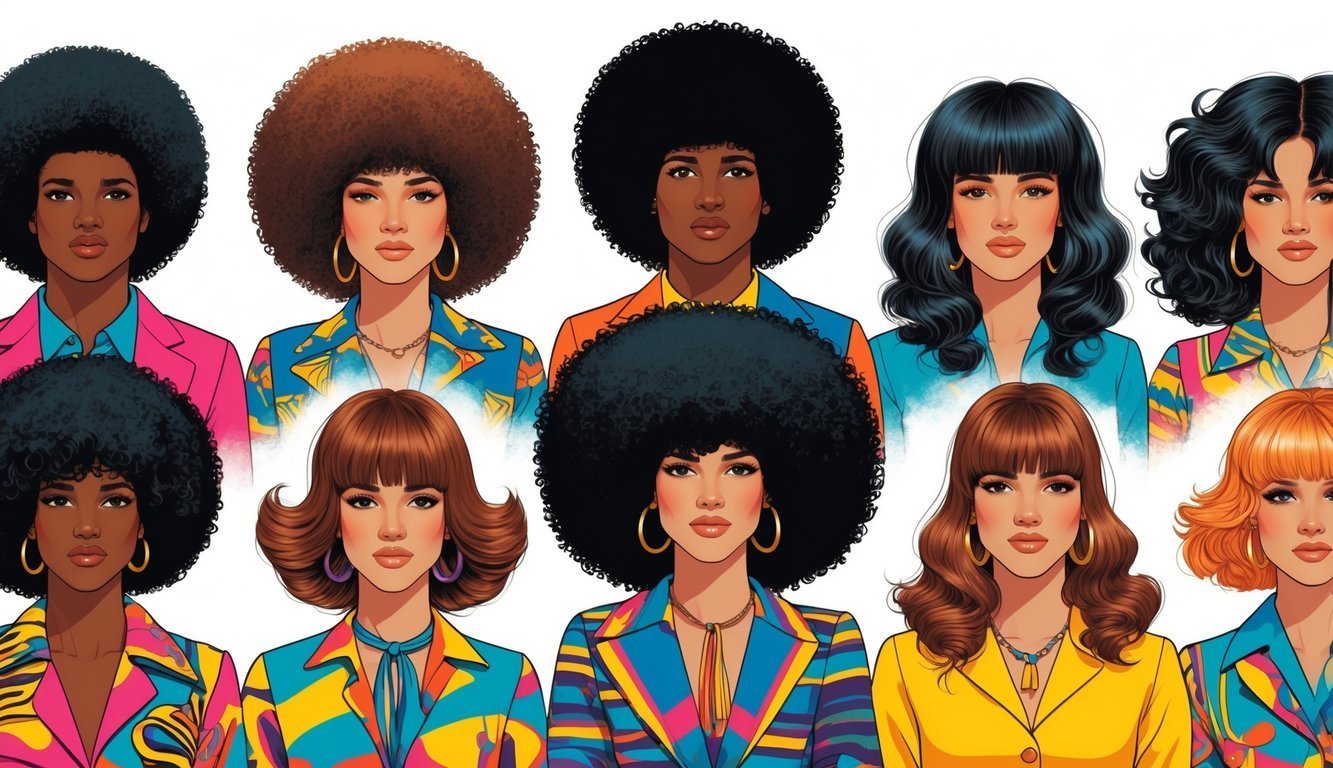
The 1970s gave us some of the most unforgettable hairstyles out there. Lots of people gave these looks a shot—some bold, some just plain fun.
Whether you lived through the ‘70s or you’re just curious, these styles still turn heads.
You probably recognize a few of these classic styles—they’ve inspired tons of trends since. They really show off the fashion and culture of that wild decade.
Digging into these looks is honestly a cool way to connect with a unique slice of history.
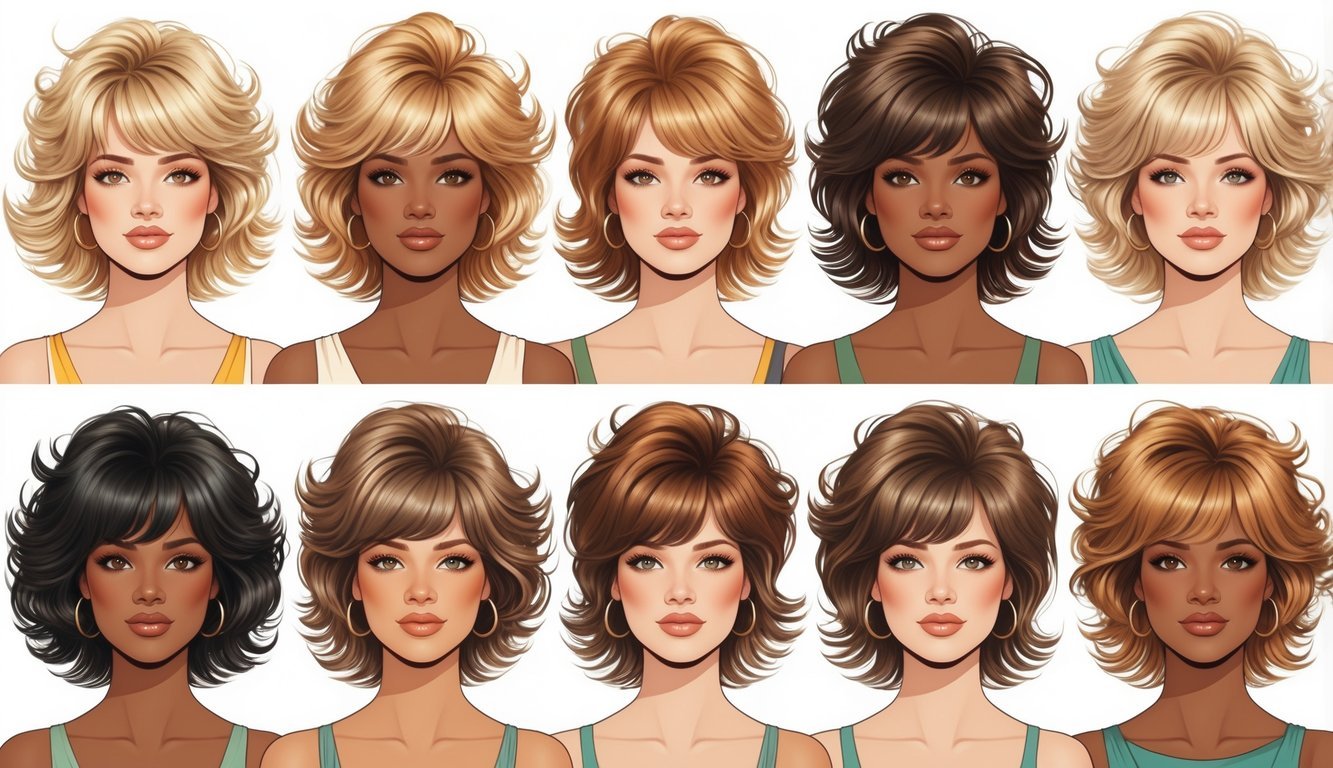
Feathered layers were everywhere back in the 1970s. You’d shape your hair so the layers flipped back, giving you that soft, feathery look.
It added volume and movement without much effort. Farrah Fawcett made this style famous—her golden waves basically became the poster for ‘cool’ hair.
You can totally try feathered layers today if you want a retro vibe. It works best with longer hair, and you can modernize it to keep things fresh.
If you’re looking for inspiration, check out 1970s feathered hair.
The shag haircut is pure 70s. You get lots of layers for texture and movement.
You can wear it with bangs or skip them, and it works on pretty much any hair length. The shag gives your hair a relaxed, messy vibe that’s hard to fake.
These days, shags look softer and easier to manage. They keep the fun shape but feel more modern.
If you’re after something playful and low-maintenance, the shag is worth a try. For more ideas, peek at Cosmopolitan’s 70s shag haircut styles.
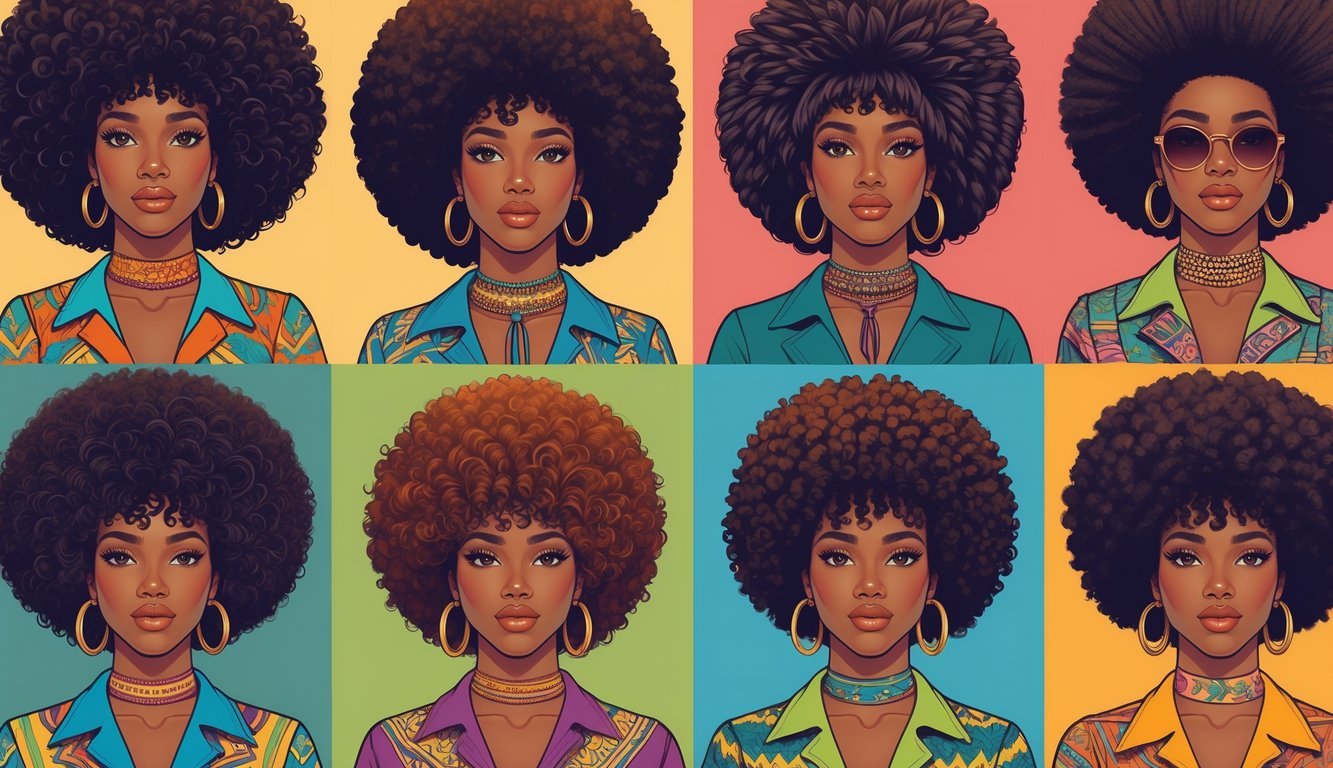
The Afro stood out as one of the hottest hairstyles in the 70s. It let you show off your natural texture in a big, bold way.
You could wear it huge and round or a bit more shaped and subtle. People loved how it celebrated Black culture and style.
It wasn’t just about hair—it was about confidence and identity. You’ll spot this look in old photos and in plenty of modern takes, too.
If you’re thinking about trying it, there are guides out there to help you care for and shape different hair types. The Afro definitely left a mark that’s still strong.
Get more on the history and styling in this 1970s afro hairstyles guide.
If you grew up in the 70s, you probably tried to copy Farrah Fawcett’s waves at least once. Her hair had those soft, face-framing layers that flipped out at the ends.
It made you look casual but still glamorous—kind of the dream, right? To get the look, you’d need a layered cut and a good round brush for volume.
People still love this style for its effortless feel. It really hit that sweet spot between styled and free-flowing.
It’s no wonder it’s one of the most iconic looks from that era. Want to see how it’s done? Here’s Farrah Fawcett’s famous long feathered hairstyle.
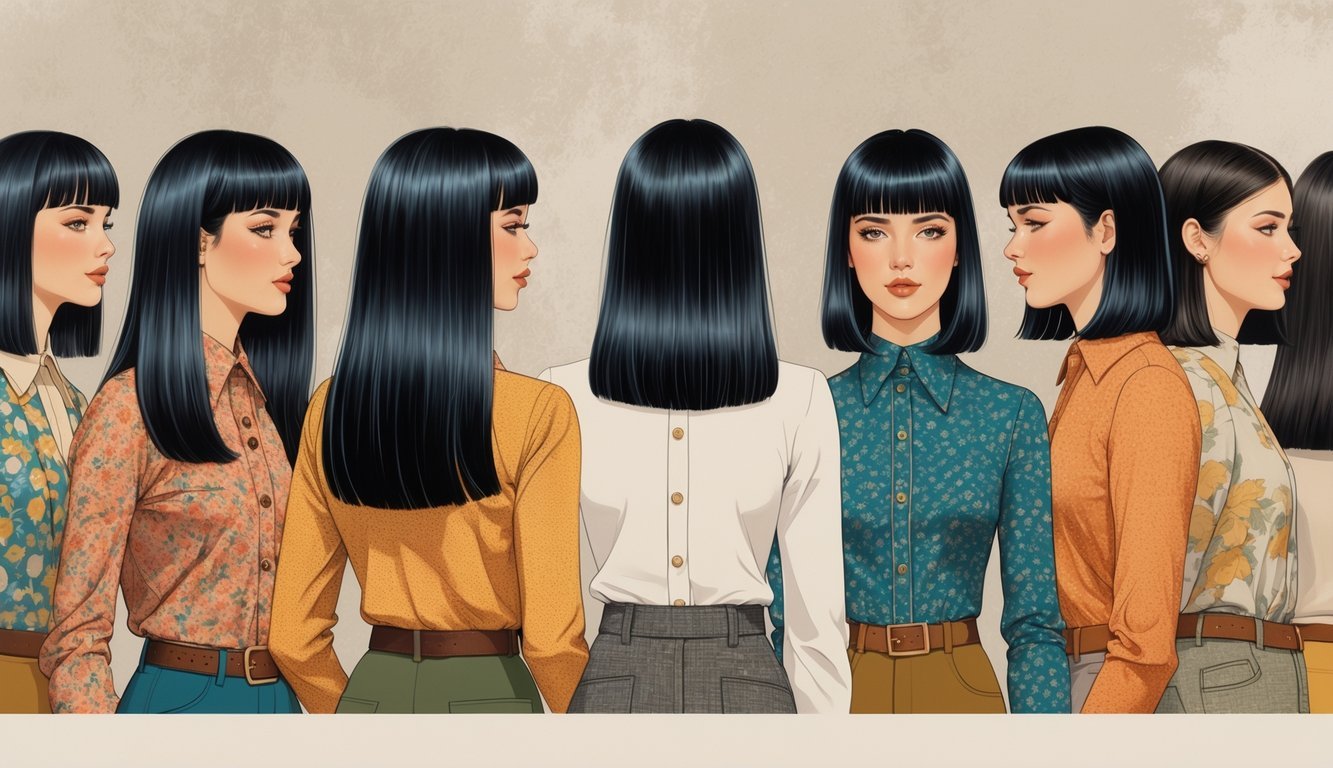
This one’s about as simple as it gets, but it was everywhere in the 70s. Just part your hair straight down the middle and keep it sleek.
It gives off a natural, balanced vibe that works for almost anything. If you want something low-key and classic, this is a solid pick.
Wear it pin-straight for a disco look or add a few waves if you’re feeling relaxed. Center parts are making a comeback, so it’s both retro and current.
Plenty of folks loved this for its timeless, easy style. Curious about its return? Check out this 70s hairstyles guide.
Big curly perms totally ruled in the 70s. If you wanted volume and texture, this was the go-to.
Tight curls made your hair pop and turned heads everywhere. You could get the look at home or in a salon—lots of women loved how it transformed straight hair into bouncy curls.
That extra bounce and boldness was hard to miss. If you want to try it now, there are plenty of modern versions inspired by those classic curls.
They bring that retro energy without feeling dated. Need ideas? Here’s a bunch of 70s perm hair inspiration.
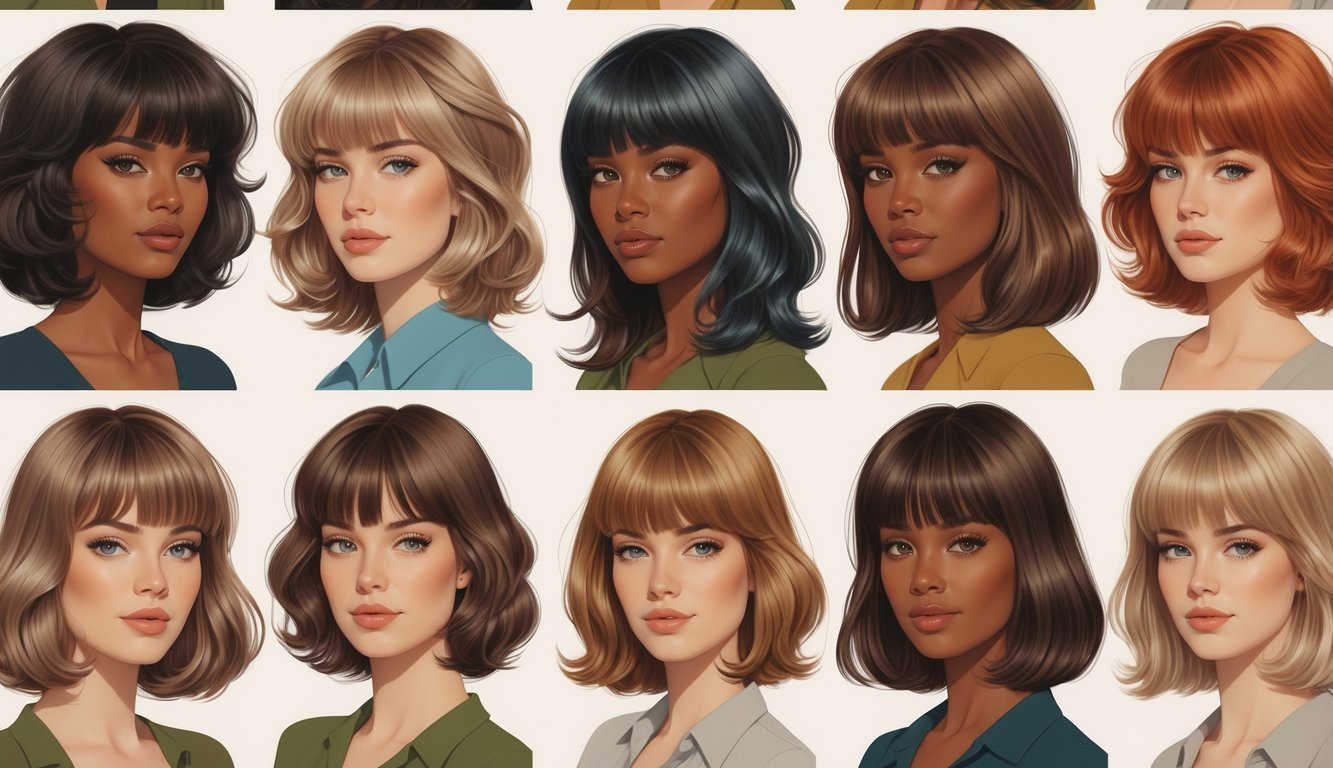
Blunt bangs made a big splash in the 70s and still look cool now. They’re cut straight across and usually kept thick and full.
If you want a look that’s simple but bold, this fits the bill. These bangs work best with long, straight hair.
You can add soft layers around your face to keep things light. A flat iron helps you get that smooth, polished finish.
Blunt bangs add a little drama and frame your eyes in a way that’s hard to resist. No wonder they’re making a comeback—see for yourself here.
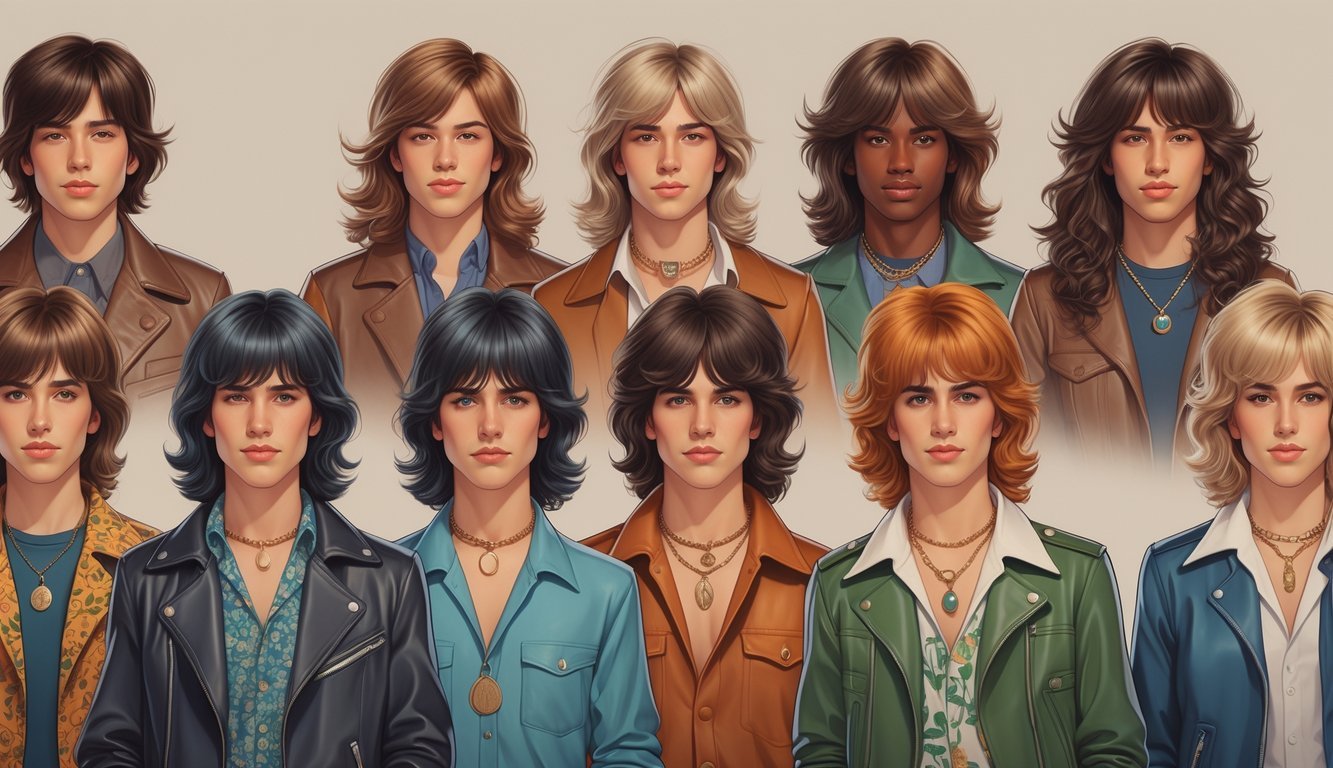
You can spot a mullet from a mile away. Short in the front and sides, long in the back—that’s the deal.
Rock stars like David Bowie and Paul McCartney rocked this cut in the 70s. It really took off in the 80s, symbolizing freedom and a bit of rebellion.
The mullet didn’t care about rules. If you ever tried it, you joined a style movement that crossed music, fashion, and all kinds of social circles.
It’s still recognized today for its unique shape and attitude. Want the backstory? Here’s the mullet’s story from the 70s.

So many things shaped 1970s hairstyles. Music, movies, and fashion all played huge roles.
These influences gave us some of the most memorable hair trends that still show up today.
You can thank stars like Farrah Fawcett and David Bowie for making certain 70s hairstyles legendary. Farrah’s feathered flip gave long hair a soft, voluminous look that lots of women wanted.
Bowie pushed boundaries with bold, colorful styles for men. Musicians from disco and rock scenes also left their mark.
The afro became a symbol of pride in the Black community, while disco queens rocked shiny curls and big, glamorous hair. Celebrities made hair a statement about personality and attitude.
Their looks inspired fans to try new cuts and colors, sometimes just to see if they could pull it off.
Fashion and hair changed together in the 70s. Bell bottoms, flowy dresses, and platform shoes matched the free-spirited hair trends.
Natural, effortless looks grew with the hippie movement. Long, straight hair with a middle part was everywhere for that laid-back vibe.
The shag cut, messy and layered, fit right in with the carefree mood. Disco brought in polished, shiny hair, held in place with plenty of hairspray.
Hairstyles became a big way to show off your style and fit in with what was cool. It’s wild how much hair was part of the cultural scene back then.
Want to dig deeper? Check out Exploring 70s Hairstyles: Evolution and Cultural Impact and 1970s Hairstyles: 8 Iconic Retro Looks To Try.
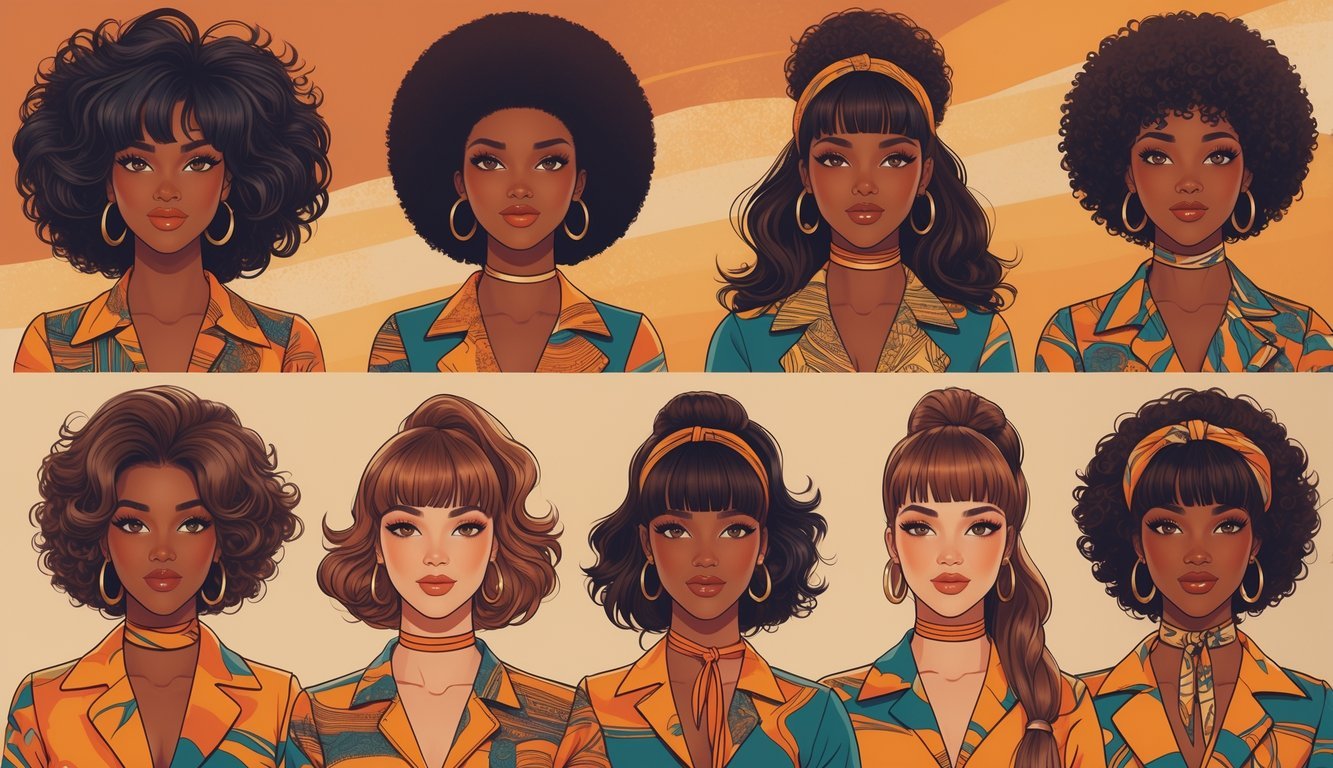
If you want real 70s hair, start with the right tools and products. Adding a modern twist can keep your look from feeling stuck in the past.
Grab a round brush and blow dryer to build volume and soft waves. For feathered layers, a flat iron helps you flick the ends out.
If you’re going for an afro or curls, use a diffuser to define curls without frizz. Lightweight mousse or volumizing spray adds body without weighing your hair down.
A flexible-hold hairspray keeps your style in place but lets it move naturally. Don’t forget a heat protectant before using hot tools.
A wide-tooth comb works wonders for detangling curls or waves. If your hair’s short, texture paste or pomade helps shape those shaggy cuts.
You can totally update 70s hairstyles by mixing old-school vibes with new trends. Feathered hair, for example, looks amazing when you add balayage or some face-framing highlights.
That kind of color gives the layers more depth and makes everything pop a bit more. If you want something different, try a shaggy cut with super sleek roots.
The contrast feels so current, honestly. Swapping out the traditional center part for a deep side part? That instantly gives your look a fresh, modern edge.
Skip the heavy gel—lighter serums keep curls shiny but still soft. Maybe experiment with asymmetrical bobs that nod to the 70s but have a sharper, updated angle.
These tweaks keep the retro spirit alive, but your style will still fit right in with today’s trends. If you want step-by-step ideas, check out guides on how to achieve 70s hair styles.